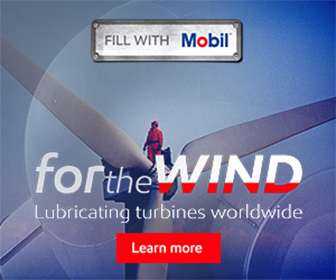Gigantic Wind Turbines Signal Era of Subsidy-Free Green Power
Offshore wind turbines are about to become higher than the Eiffel Tower, allowing the industry to supply subsidy-free clean power to the grid on a massive scale for the first time.
Manufacturers led by Siemens AG are working to almost double the capacity of the current range of turbines, which already have wing spans that surpass those of the largest jumbo jets. The expectation those machines will be on the market by 2025 was at the heart of contracts won by German and Danish developers last week to supply electricity from offshore wind farms at market prices by 2025.
Just three years ago, offshore wind was a fringe technology more expensive than nuclear reactors and sometimes twice the cost of turbines planted on land. The fact that developers such as Energie Baden-Wuerttemberg AG and Dong Energy A/S are offering to plant giant turbines in stormy seas without government support show the economics of the energy business are shifting quicker than anyone thought possible -- and adding competitive pressure on the dominant power generation fuels coal and natural gas.
"Dong and EnBW are banking on turbines that are three to four times bigger than those today," said Keegan Kruger, analyst at Bloomberg New Energy Finance. "They will be crucial to bringing down the cost of energy."
About 50 miles (80 kilometers) off the coastline in the German North Sea, where the local fish and seagulls don't complain about the view of turbines in their back yards, offshore wind technology is limited only to how big the turbines can grow. Dong has said it expects machines able to produce 13 to 15 megawatts each for its projects when they're due to be completed in the middle of the next decade -- much bigger than the 8-megawatt machines on the market now.
Heavy Weights
Just one giant 15-megawatt turbine would produce power more cheaply than five 3-megawatt machines, or even two with an 8-megawatt capacity. That's because bigger turbines can produce the same power from a fewer number of foundations and less complex grid connections. The wind farm's layout can be made more efficient, and fewer machines means less maintenance.
"Right now, we are developing a bigger turbine," said Bent Christensen, head of cost of energy at Siemens Wind Power A/S, in a phone interview. "But how big it will be we don't know yet."
Larger turbines are heavier, placing a natural limit on size, said Christensen. Lightweight materials such as carbon fiber may be required to reduce the heaviness of the rotor and the blades as the turbines grow.
"If we just go 10 years back, nobody could imagine what we're doing today," he said. "When you try to predict the future you have to be quite careful."
The scale of the turbines may not even stop at 15 megawatts. In Albuquerque, New Mexico, a unit of Lockheed Martin Corp. is working on components for a possible 50-megawatt turbine that would have blades 100 meters long -- each stretching further than two soccer fields.
These gigantic blades would be able to fold away to reduce the risk of damage at dangerous wind speeds. Siemens, along with Vestas Wind Systems and General Electric Co., are advising on the research program that's funded by the U.S. Department of Energy.
Eiffel Tower
In the nearer term, Denmark, the home of wind energy, last month said it would expand the country's main offshore wind test site to demonstrate turbines that will soar as high as 330 meters, taller than the Eiffel Tower. That could take the generation capacity past 10 megawatts, enabling turbine makers like Vestas and Siemens to challenge the boundaries of current capacity.
"The question of turbine capacity and wing span has never really been an issue from a technological perspective," Jens Tommerup, chief executive of MHI Vestas Offshore Wind A/S, a partnership Vestas has with Mitsubishi Heavy Industries Ltd., said in an email. "We have already taken the capacity of our 8-megawatt platform to 9-megawatt. The real question is what can the market support."
Turbines will get bigger if developers and governments allow.
"The answer lies more in stable, visible volume targets rather than the technology itself," Tommerup said.
Bloomberg | www.bloomberg.com/news









